
Hepatology Communications
Scope & Guideline
Fostering collaboration for a healthier liver future.
Introduction
Aims and Scopes
- Liver Disease Mechanisms and Pathophysiology:
Research exploring the cellular and molecular mechanisms underlying various liver diseases, including nonalcoholic fatty liver disease (NAFLD), alcoholic liver disease (ALD), hepatitis, and hepatocellular carcinoma (HCC). - Clinical Management and Therapeutics:
Studies focused on the clinical management strategies for liver diseases, including the effectiveness and safety of pharmacological treatments, surgical interventions, and emerging therapies. - Epidemiology and Public Health:
Research investigating the epidemiological trends, risk factors, and public health implications of liver diseases on a global scale. - Innovative Diagnostic Approaches:
Development and validation of novel diagnostic tools and biomarkers to enhance the detection and monitoring of liver diseases. - Patient-Centered Care and Quality of Life:
Investigations into how liver diseases affect patients' quality of life, including psychosocial aspects and health-related quality of life outcomes. - Translational Research and Experimental Models:
Utilization of experimental models and translational research approaches to understand liver pathophysiology and to develop new therapeutic strategies.
Trending and Emerging
- Metabolic Dysfunction-Associated Liver Disease (MASH/MASLD):
Research on metabolic dysfunction-associated steatotic liver disease is gaining traction, reflecting the increasing prevalence of obesity-related liver conditions. - Immunotherapy and Targeted Therapies:
There is a growing interest in the role of immunotherapy and targeted treatments for liver cancer, particularly hepatocellular carcinoma, highlighting advancements in personalized medicine. - Gut-Liver Axis Research:
Studies exploring the gut-liver axis, including the impact of gut microbiota on liver health and disease progression, are emerging as a significant area of investigation. - Digital Health and Telemedicine:
The integration of digital health technologies and telemedicine in liver disease management is on the rise, particularly in response to the COVID-19 pandemic. - Health Disparities and Social Determinants of Health:
Research addressing health disparities in liver disease, particularly among marginalized populations, is becoming increasingly prominent as awareness grows. - Artificial Intelligence and Machine Learning:
The application of AI and machine learning in diagnosing liver diseases and predicting outcomes is a rapidly growing area, reflecting technological advancements.
Declining or Waning
- Traditional Risk Factors for Liver Disease:
There appears to be a waning emphasis on traditional risk factors for liver disease, such as obesity and alcohol consumption, as newer studies focus on metabolic dysfunction and genetic predispositions. - Conventional Biomarker Studies:
Research centered on established biomarkers for liver disease is decreasing, as innovative diagnostic methods and multi-omics approaches gain prominence. - Single Disease Focus Studies:
There is a noticeable decline in studies that focus exclusively on single liver diseases; instead, there is a shift towards comprehensive studies that address multiple liver conditions and their interrelationships. - Invasive Diagnostic Procedures:
The use of invasive diagnostic procedures, such as liver biopsies, is decreasing in favor of non-invasive methods like elastography and blood-based biomarkers.
Similar Journals

Translational Gastroenterology and Hepatology
Connecting Research to Real-World Solutions in Hepatology.Translational Gastroenterology and Hepatology, published by AME Publishing Company, stands as a pivotal platform for advancing the understanding and treatment of gastrointestinal and liver diseases. With its focus on translational research, this journal aims to bridge the gap between laboratory discoveries and clinical applications, thus fostering improvements in patient care. Although specific metrics like H-Index and Scopus ranks are currently unavailable, the journal is committed to maintaining high standards of scholarly communication and excellence. As an open-access publication, it ensures that valuable findings are readily accessible to a global audience, promoting collaboration and innovation among researchers, clinicians, and healthcare professionals invested in gastroenterology and hepatology. The journal's dedication to disseminating groundbreaking research makes it an essential resource for those seeking to stay at the forefront of these ever-evolving fields.
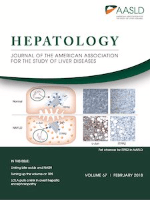
HEPATOLOGY
Advancing liver research for a healthier tomorrow.HEPATOLOGY is a premier scholarly journal dedicated to advancing the field of liver research and clinical practice. Published by Lippincott Williams & Wilkins, this journal boasts an impressive impact factor and holds a prestigious position as one of the top-ranked publications in both Hepatology (Q1) and Medicine (miscellaneous, Q1) categories as of 2023. HEPATOLOGY, with its commitment to disseminating high-quality research since its inception in 1981, serves as an essential platform for researchers, clinicians, and students focusing on liver diseases, including hepatitis, cirrhosis, and liver cancer. The journal's editorial board comprises leading experts who guide the publication towards its objective of fostering innovation and collaboration in this critical area of health. Although it does not offer an open access model, HEPATOLOGY ensures that its comprehensive analyses, reviews, and groundbreaking studies are accessible to the global medical community. Join the discourse in hepatology and be a part of a transformative journey through this indispensable resource.
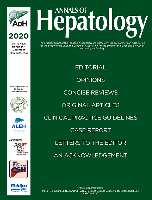
Annals of Hepatology
Innovating liver care with cutting-edge research.Annals of Hepatology is an esteemed open-access journal dedicated to the dynamic field of liver research and hepatology. Published by Elsevier España since 2002, this journal has established itself as a pivotal resource for researchers and clinicians alike, boasting a remarkable impact in the medical community with its 2023 rankings placing it in the Q2 quartile for Hepatology and Q1 quartile in Medicine (Miscellaneous). With an impressive Scopus rank of #20 out of 82 in the field of Hepatology and a notable 76th percentile standing, the journal is committed to disseminating high-quality, peer-reviewed articles that advance the understanding of liver diseases and their management. The editorial scope encompasses a broad range of topics, including liver pathology, therapeutic interventions, and public health implications related to hepatic disorders. Researchers, healthcare professionals, and students interested in the latest advancements in hepatology will find Annals of Hepatology an invaluable platform for sharing and accessing knowledge, with the convenience of open access enhancing global visibility and collaboration in this critical field of medicine.
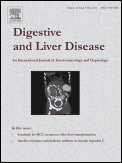
DIGESTIVE AND LIVER DISEASE
Bridging research and practice in gastroenterology.DIGESTIVE AND LIVER DISEASE is a prominent journal published by Elsevier Science Inc, dedicated to advancing the field of gastroenterology and hepatology. With an ISSN of 1590-8658 and an E-ISSN of 1878-3562, this journal has established itself as a significant resource within the academic community, especially considering its Q2 ranking in both gastroenterology and hepatology categories as of 2023. Spanning from 2000 to 2024, the journal presents a diverse array of peer-reviewed articles, clinical studies, and review papers that explore the latest advancements and research findings in digestive and liver diseases. The journal's robust impact, reflected in its Scopus rankings—40th out of 167 in gastroenterology and 28th out of 82 in hepatology—highlights its critical role in shaping practices and understanding in these vital areas of medicine. With open access options available, DIGESTIVE AND LIVER DISEASE aims to make high-quality research accessible to a wider audience, thereby encouraging collaboration and innovation. Researchers, healthcare professionals, and students alike will find valuable insights into the complex mechanisms, diagnostics, and therapeutic strategies pertinent to digestive and liver health.

JHEP Reports
Driving excellence in gastroenterology and internal medicine.JHEP Reports, published by ELSEVIER, stands at the forefront of scholarly communication in the fields of Gastroenterology, Hepatology, Immunology and Allergy, and Internal Medicine. As an Open Access journal since 2019, it provides a platform for the dissemination of high-quality research findings, making vital information readily accessible to a global audience. With a commendable impact characterized by a Q1 category ranking across four medical disciplines in 2023, JHEP Reports demonstrates its significance and influence, reflected in its impressive Scopus ranks—#11 in Gastroenterology and #14 in Internal Medicine, amongst others. This esteemed journal not only plays a critical role in advancing knowledge but also fosters collaboration among researchers, practitioners, and students keen on exploring innovations and breakthroughs in health sciences. At RADARWEG 29, 1043 NX AMSTERDAM, NETHERLANDS, JHEP Reports is committed to bridging the gap between research and application, ushering in a new era of informed and effective healthcare solutions.

Hepatology International
Unveiling insights to transform hepatology practices.Hepatology International is a premier academic journal dedicated to advancing the field of liver research and hepatology. Published by SPRINGER, this journal boasts a prestigious Q1 ranking in Hepatology as of 2023, underscoring its commitment to high-quality research dissemination. The journal’s scope encompasses a wide range of topics related to liver disease, including clinical, translational, and basic science studies. With its impact factor reflecting its relevance and influence in the field, Hepatology International serves as an essential resource for researchers, clinicians, and students aiming to keep abreast of the latest developments and breakthroughs. Though traditionally a subscription-based journal, it offers a vast array of insightful articles that contribute significantly to our understanding of hepatological conditions. The journal continues its trajectory of growth since its inception in 2008, anticipating a convergence of knowledge and innovation through to 2024. Located in the heart of New York City, this journal not only represents a crucial platform for global hepatology research but also fosters a collaborative community of experts dedicated to improving liver health worldwide.

Hepatoma Research
Advancing the Frontiers of Liver Cancer ResearchHepatoma Research is a pivotal academic journal dedicated to advancing the field of hepatology and oncology, published by OAE PUBLISHING INC. Launched in 2019, this open-access journal has quickly established itself as a valuable resource for researchers and professionals dedicated to the study of liver cancer and related disorders. With an ISSN of 2394-5079 and E-ISSN 2454-2520, it offers insightful research articles and reviews aimed at enhancing clinical practices and understanding the complexities surrounding hepatoma. The journal is ranked in the Q3 category for both hepatology and oncology as of 2023, reflecting its commitment to quality amidst a competitive landscape. With its Scopus rankings placing it at the 47th percentile in hepatology and the 39th percentile in oncology, Hepatoma Research continues to be a crucial platform for disseminating groundbreaking findings. This journal underscores the importance of collaborative research and encourages submissions that contribute to the global discourse on liver cancer treatment and management.
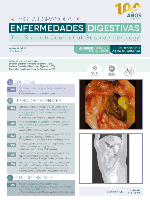
REVISTA ESPANOLA DE ENFERMEDADES DIGESTIVAS
Connecting researchers and clinicians for better outcomes.REVISTA ESPANOLA DE ENFERMEDADES DIGESTIVAS, a pivotal Open Access journal published by ARAN EDICIONES, S A, has been at the forefront of advancing the field of gastroenterology since its inception in 1990. With a robust commitment to disseminating high-quality research, the journal provides a platform for researchers, clinicians, and students to share innovative findings and insights concerning digestive diseases. The journal is characterized by its Q3 ranking in both Gastroenterology and Miscellaneous Medicine categories, indicative of its significant contributions to these fields, and is positioned within the 36th percentile of Scopus rankings for medicine related to gastroenterology. Based in Spain, REVISTA ESPANOLA DE ENFERMEDADES DIGESTIVAS has embraced the Open Access model since 2004, ensuring that its articles are readily available to a global audience without financial barriers. The journal not only supports academic discourse but also plays a crucial role in improving clinical practices and health outcomes related to digestive health.
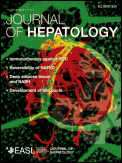
JOURNAL OF HEPATOLOGY
Charting New Territories in Liver Health ScienceJOURNAL OF HEPATOLOGY, published by Elsevier, stands as a preeminent source in the field of Hepatology, with its impact underscored by a remarkable 2023 Category Quartile of Q1 and a Scopus rank of 3rd out of 82 journals, placing it in the 96th percentile for the discipline. Since its inception in 1985, this journal has been a vital conduit for the dissemination of pioneering research, clinical studies, and reviews related to liver diseases and their impact on global health. Although it currently does not offer open access options, the journal is committed to providing top-tier content to its readership—researchers, medical professionals, and students—in order to advance knowledge and foster innovation in hepatology. With a broad and inclusive scope, it aims to cover significant breakthroughs, therapeutic advancements, and epidemiological studies, continually pushing the boundaries of understanding in liver health. The journal is based in Amsterdam, Netherlands, and remains an essential resource for those dedicated to the progression of hepatologic science.
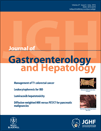
JOURNAL OF GASTROENTEROLOGY AND HEPATOLOGY
Driving excellence in gastrointestinal and liver disease studies.Welcome to the JOURNAL OF GASTROENTEROLOGY AND HEPATOLOGY, an esteemed publication in the field of gastroenterology and hepatology, proudly published by WILEY. Established in 1986, this journal serves as a crucial platform for researchers, healthcare professionals, and students, presenting groundbreaking research and comprehensive reviews that drive advances in understanding and treating gastrointestinal and liver diseases. With a strong reputation evidenced by its Q1 ranking in gastroenterology and Q2 ranking in hepatology, this journal ranks impressively in the Scopus metrics - positioned at #22 out of 167 in gastroenterology and #21 out of 82 in hepatology, reflecting its contribution to scholarly excellence. Although it does not offer open access options, the journal’s rich archive and diverse topics make it indispensable for those dedicated to improving patient outcomes in these critical areas of medicine. Whether you are a seasoned researcher or an aspiring medical professional, engaging with this journal will keep you at the forefront of the latest developments and emerging trends in gastroenterology and hepatology research.